3.2.1 The Search for the Molecular Basis for Life: 3 Foundational Experiments
1/25
Earn XP
Name | Mastery | Learn | Test | Matching | Spaced |
|---|
No study sessions yet.
26 Terms
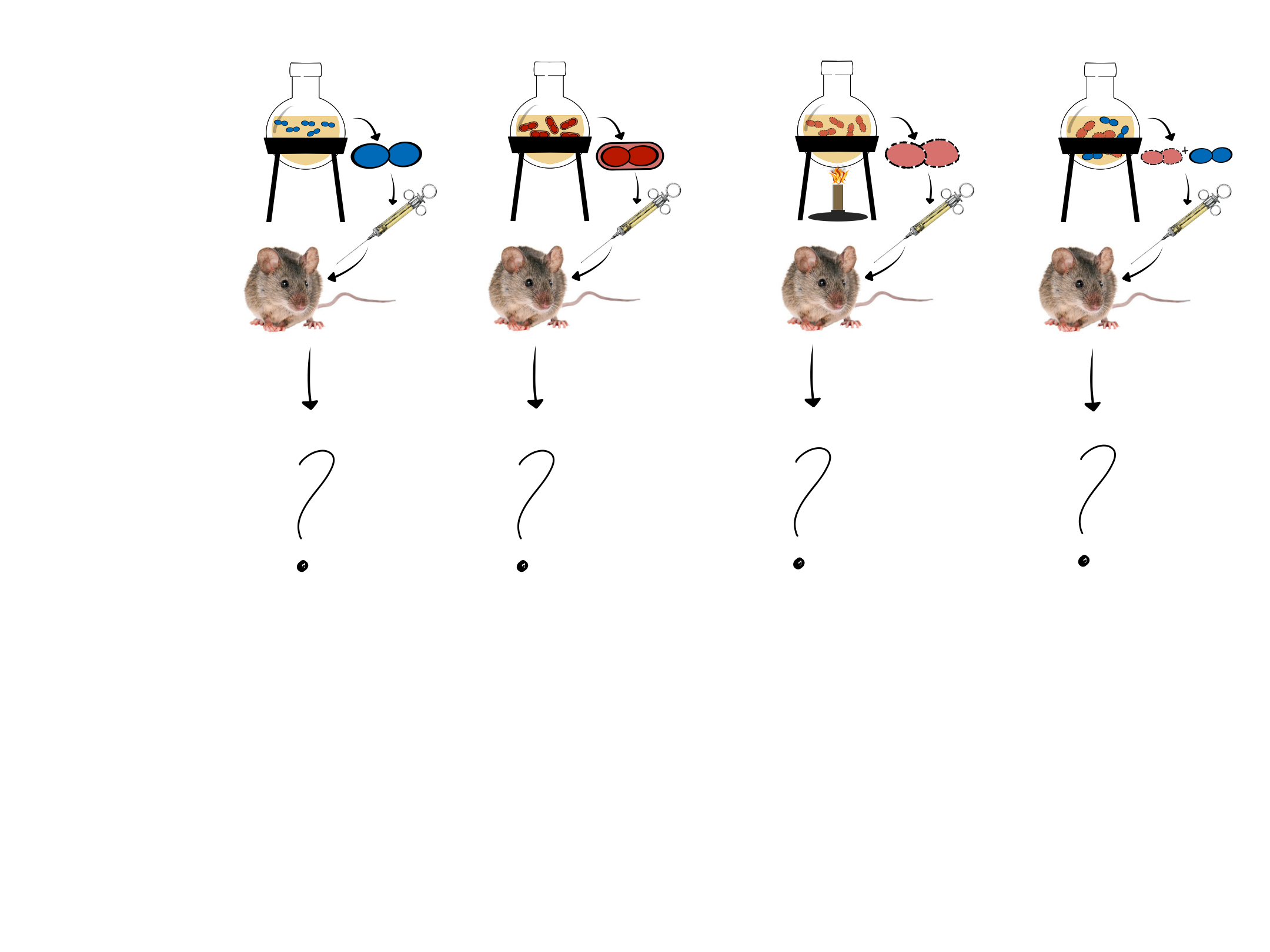
Which experiment is pictured?
Griffith experiment

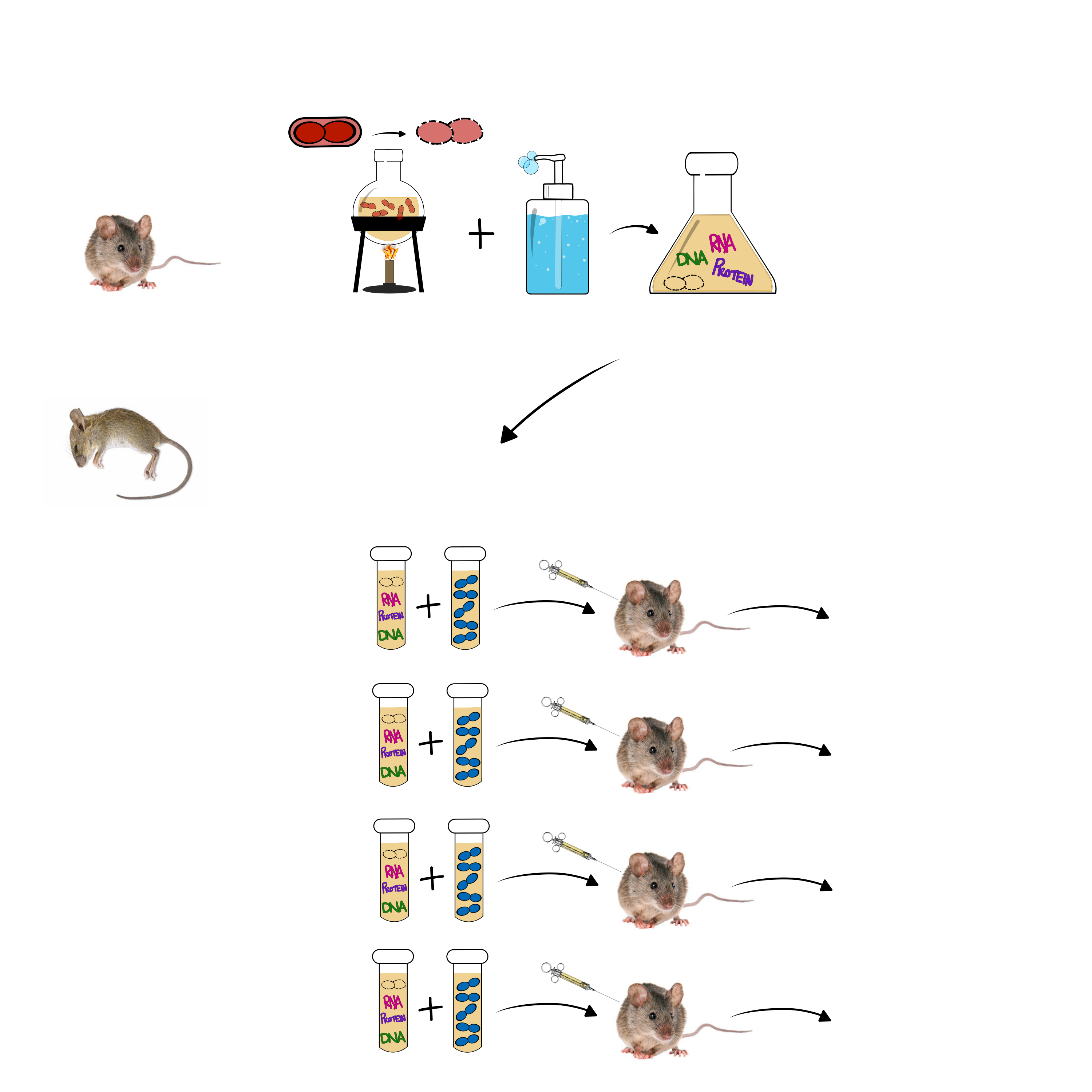
Which experiment is pictured?
Avery, McCarty, MacLeod experiment
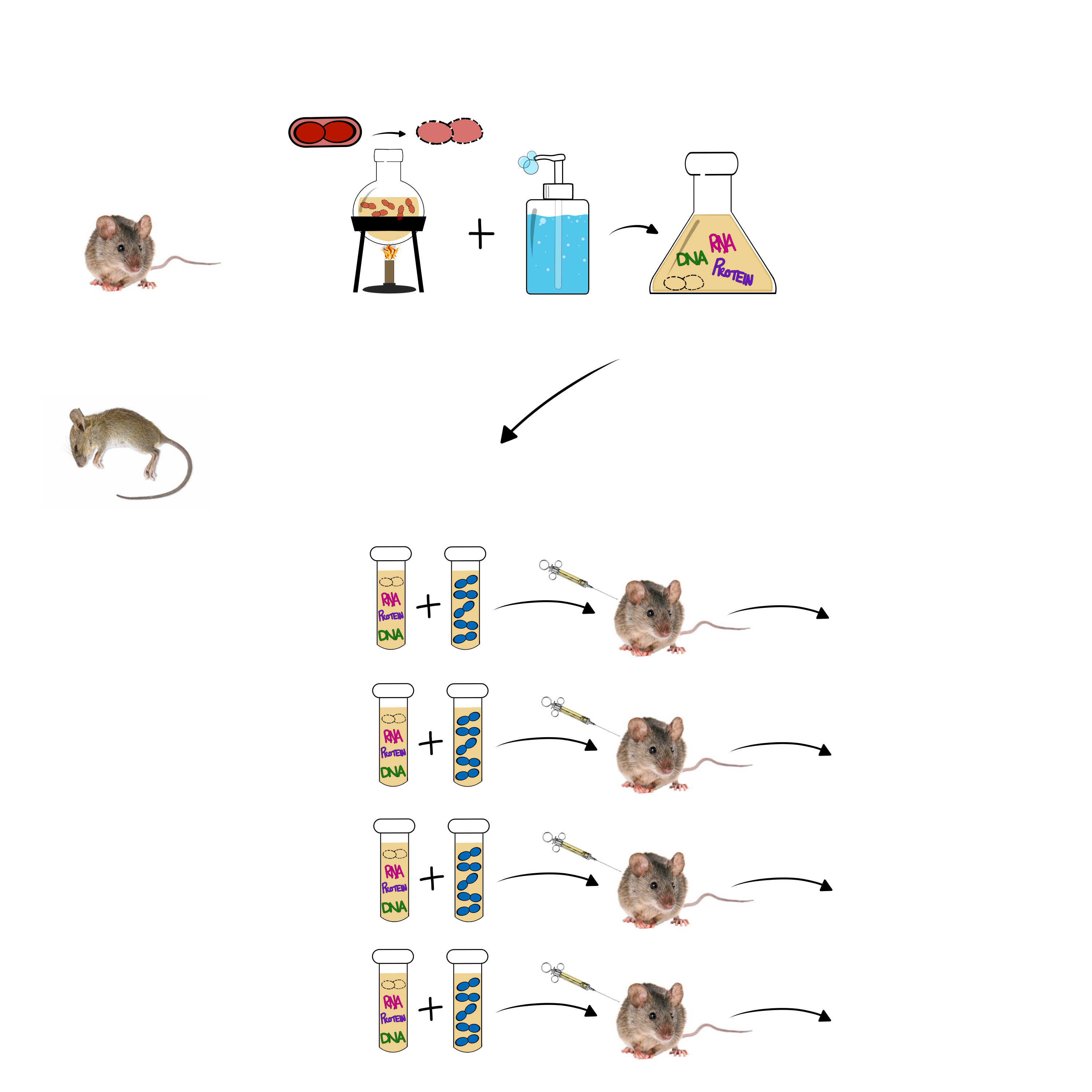
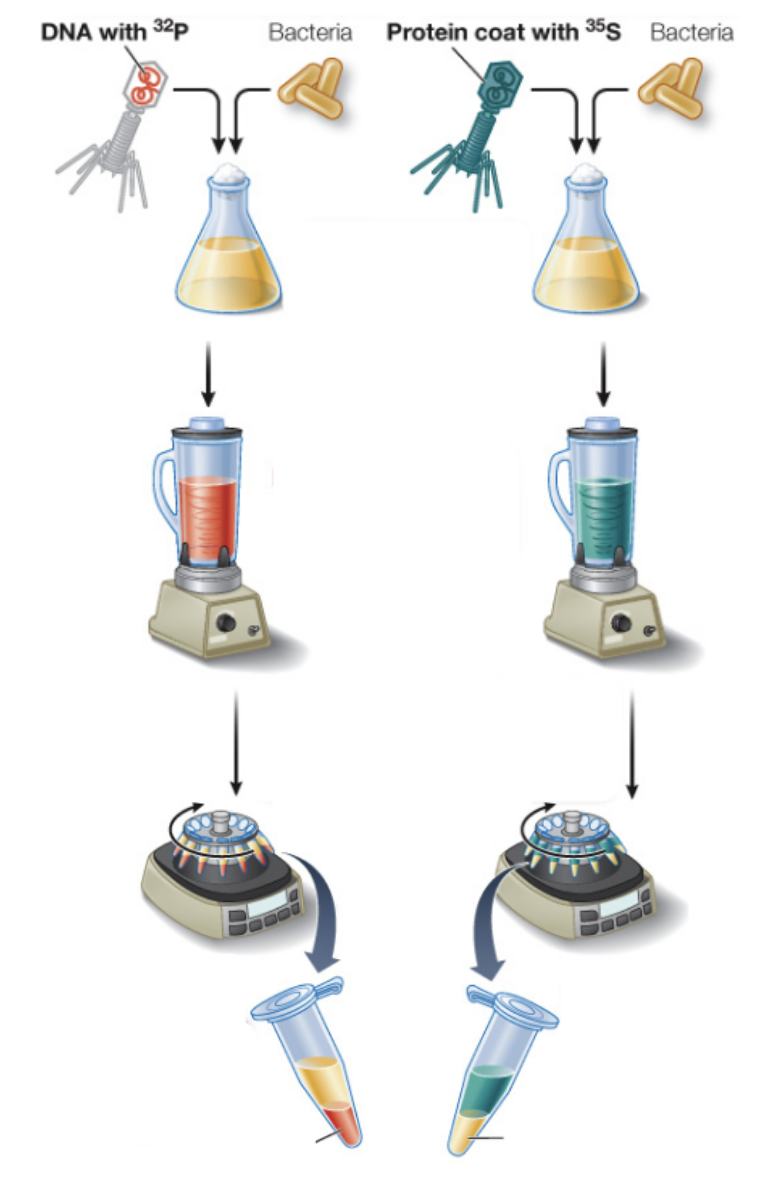
Which experiment is pictured?
Hershey and Chase experiment
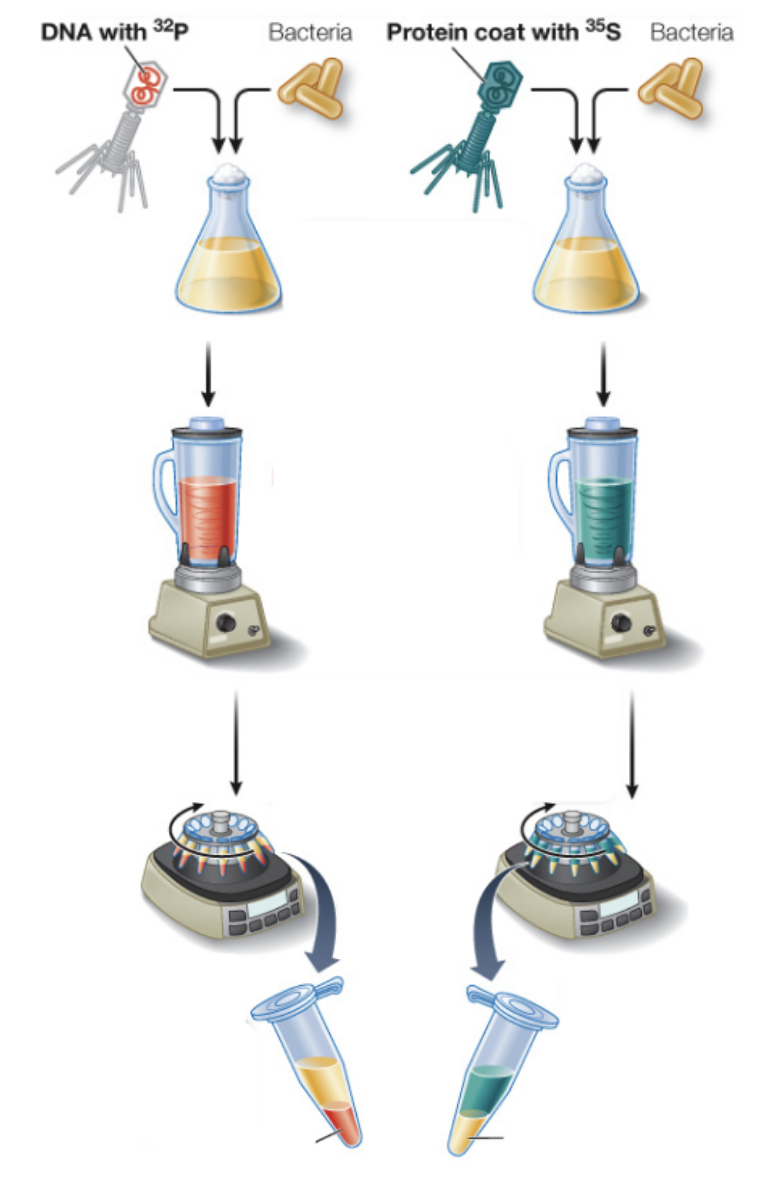
Year of Griffith's Experiment: 1928, 1944, or 1952?
1928
Year of Avery, McCarty, Macleod's Experiment: 1928, 1944, or 1952?
1944
Year of Hershey and Chase's Experiment: 1928, 1944, or 1952?
1952
Which strain of Streptococcus pneumoniae bacteria is protected by an outer capsule and causes a deadly infection?
S strain
Which strain of Streptococcus pneumoniae bacteria lacks an outer capsule and is non-deadly?
R strain
What is bacterial transformation?
The process by which a bacterium takes up genes from other cells causing a change in its characteristics
If a mouse is injected with the R strain of bacteria, what happens?
The mouse lives
If a mouse is injected with the S strain of bacteria, what happens?
The mouse dies
If a mouse is injected with heat-treated S strain of bacteria, what happens?
The mouse lives
If a mouse is injected with a mixture of heat-treated S strain and R strain, what happens?
The mouse dies
Why did the combination of two strains of bacteria, both of which were harmless on their own, cause the results Griffith saw in his experiment?
The genetic molecule of the S strain bacteria was absorbed into the R strain bacteria and transformed the R strain into a deadly strain.
Which experiment involved injecting mice with R strain bacteria, S strain, heat-treated S strain, and a mixture of R + heat-treated S?
Griffith experiment
Which scientist(s) concluded that something can transform non-deadly bacteria into a deadly strain?
Griffith experiment
Which of the following molecules, when removed from a cell, eliminates the ability for bacteria to transform? Carbohydrate, DNA, Lipid, Protein, or RNA
DNA
Which scientist(s) concluded that if DNA in bacterial cells is destroyed then bacteria cannot transform.
Avery, McCarty, MacLeod
Which experiment used enzymes to denature different molecules in bacterial cells one at a time in order to determine which is used as the genetic molecule by bacteria?
Avery, McCarty, MacLeod Experiment
What is a bacteriophage?
A type of virus that infects bacterial cells
Which experiment used radioactive elements to label DNA and protein in bacteriophages, exposed the bacteriophages to bacteria, and analyzed the elements found in the bacterial cells to determine the molecule?
Hershey and Chase experiment
Which element is found in DNA but not in Protein?
Phosphorus
Which element is found in Protein but not in DNA?
Sulfur
If a bacteriophage infects a bacterial cell, which element can be detected inside the cell?
Phosphorus
If a bacteriophage infects a bacterial cell, which element can be detected in the fluid outside the cell?
Sulfur
Which scientist(s) concluded that viruses (and all living organisms) use DNA as their genetic material?
Hershey and Chase